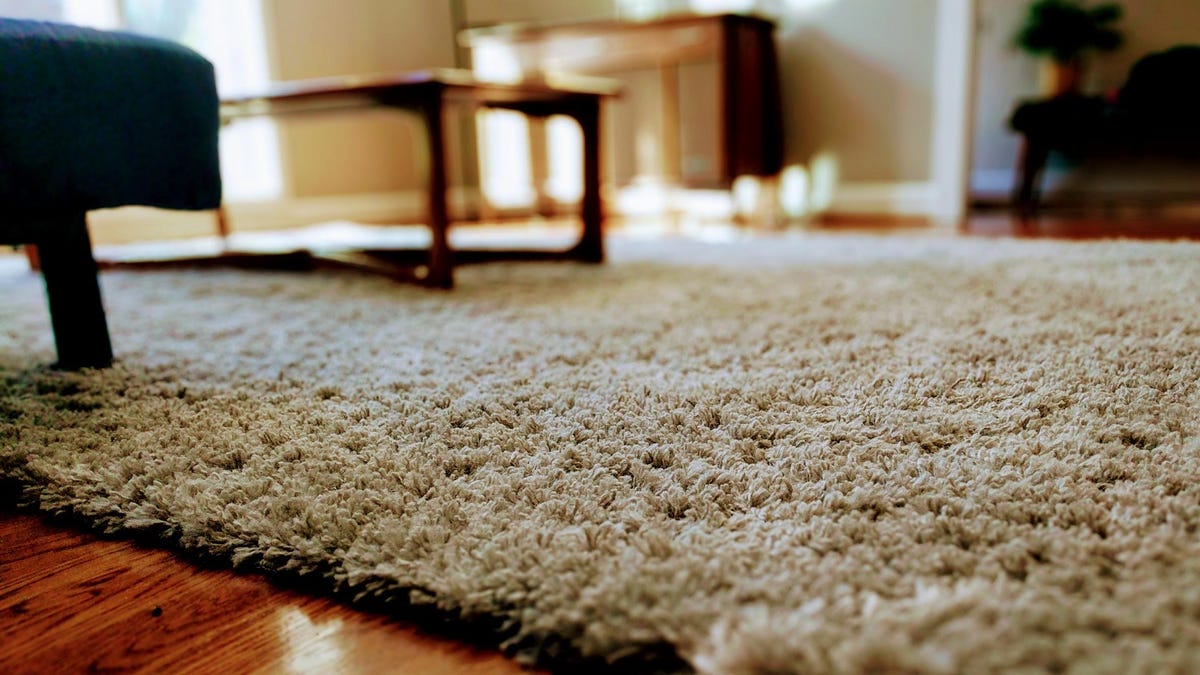What you need to know before buying a rug online
Here are some tips to finding durable rugs that work for your home and wallet.

Whether you're looking to save money or you just don't have any decent places to shop around town, shopping online for rugs is a smart choice. But, shopping online for something that is so visual and tactile is difficult.
I've ordered four large rugs online in the last few months. Here are the lessons I learned that will make your purchase easier.
Measuring mishaps
Online stores are going to have a wide range of rug sizes. Measuring your room to find the closest fit may seem like an obvious step, but stay with me on this one. I measured my room's length and width to be sure that my rug would fit perfectly.
The problem was I forgot about my furniture. When the rug came, I had to lift my extremely heavy entertainment center so the rug could slip under to fit the dimensions I measured.
Shipping back a heavy rug for an exchange is a huge pain. If I had to do it again, I would measure up to my entertainment center instead of to the wall behind. This would make the edge of the rug butt up against it and I wouldn't need three people to help me lift.
If you don't intended on lifting any heavy furniture to install your rug, I recommend doing the same. Only measure the floor area you want to cover, not the measurement from wall to wall.
Silk rugs are soft, but delicate.
Check the material content
Rugs are made in a lot of different materials. When shopping online, don't just click on the rug with the cutest pattern. Investigate what the rug is made out of. Since you won't have any guidance from a sales clerk and you can't run your fingers over the it, here are some tips for choosing the right material:
Jute or other grass rugs are very durable and are often used on porches or patios. Don't expect these rugs to be warm and cozy, though. The fibers are often rough and don't insulate very well.
Synthetic is durable, inexpensive, easy to clean and often very plush. The biggest problem with this type of rug is that it has a chemical smell for a while after it's shipped from the factory.
Wool is a classic and has been used to make rugs for centuries because it is warm, soft and resists spills. It is more expensive than synthetic, but it has a longer life span and no smell. Just be warned, it will shed for a little while when it's new.
Cotton, like wool, is a time-honored rug material. It's more affordable, too. The only problem is that it isn't as durable as wool or synthetic. It is really easy to clean, though. Some smaller rugs can even be thrown in the washing machine.
Silk rugs are shiny and smooth. The only problem is the fabric is delicate. Choose this type of rug for low-traffic areas, like a bedroom.
Look for durability
There are a few buzz words you need to look for in product descriptions. Understanding them will help you pick a better-quality rug.
Pile is how deep the fibers of the rug are. Low pile means that the rug will be stiffer and less plush, while deep or high pile means the fibers are long and soft. For example, the fibers in a low-pile rug are around a quarter of an inch long while a high pile can be several inches long.
Low pile is typically easier to keep clean and wears better in the long run. Deep pile is best for throw rugs by the fireplace or anywhere people like to lie on the floor.
Line count is the number of knots or stitches per square inch. As the number goes up, so does the quality. Rugs with 200 to 400 knots per square inch are often good-quality rugs, though you can find rugs with over 6,000 knots per square inch. These are typically handmade, expensive and have a very detailed pattern.
Needle count is the number of loops of yarn or fibers that make up a rug. The higher the count, the denser the rug and the longer it will last.
Don't worry about these numbers too much. Most sites won't have the line count or needle count, but I'm including it just in case you come across them. You'll mainly just be dealing with pile height.
You can find inexpensive and durable synthetic rugs online.
Save some money
Rugs are generally an investment when you're buying larger pieces. Typical prices range from $100 to $3,000, so you're going to want to save every bit you can without compromising on quality.
There are now plenty of online retailers, like Rugs Direct and Rugs USA that sell rugs for less than most brick-and-mortar stores. You can also check out budget-friendly decor brands, like H&M Home and Urban Outfitters.
Another thing to keep in mind when shopping for rugs is shipping. Rugs are typically superheavy, so you definitely don't want to pay for shipping. Shop on sites that offer free shipping, like Amazon Prime , Wayfair, Houzz and Joss and Main.
Try it out in your room
There's one advantage with online shopping that you just can't get anywhere else: AR. Wayfair, Augmented Furniture and Houzz apps, to name a few, offer the ability to see your rug picks in your room through augmented reality.
I highly suggest taking advantage of this feature to avoid the hassle of returns.
Use augmented reality to decorate your house with these apps

